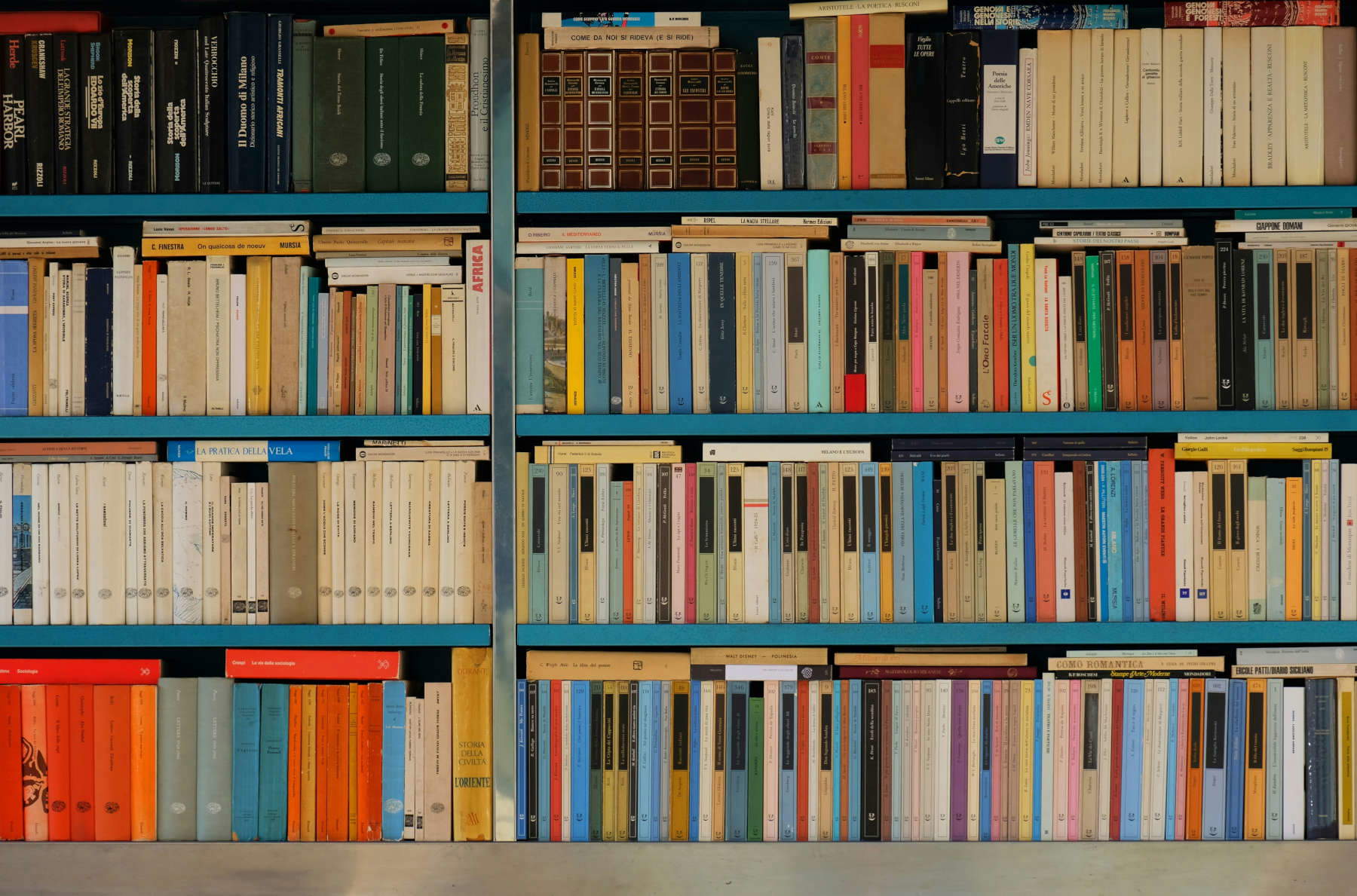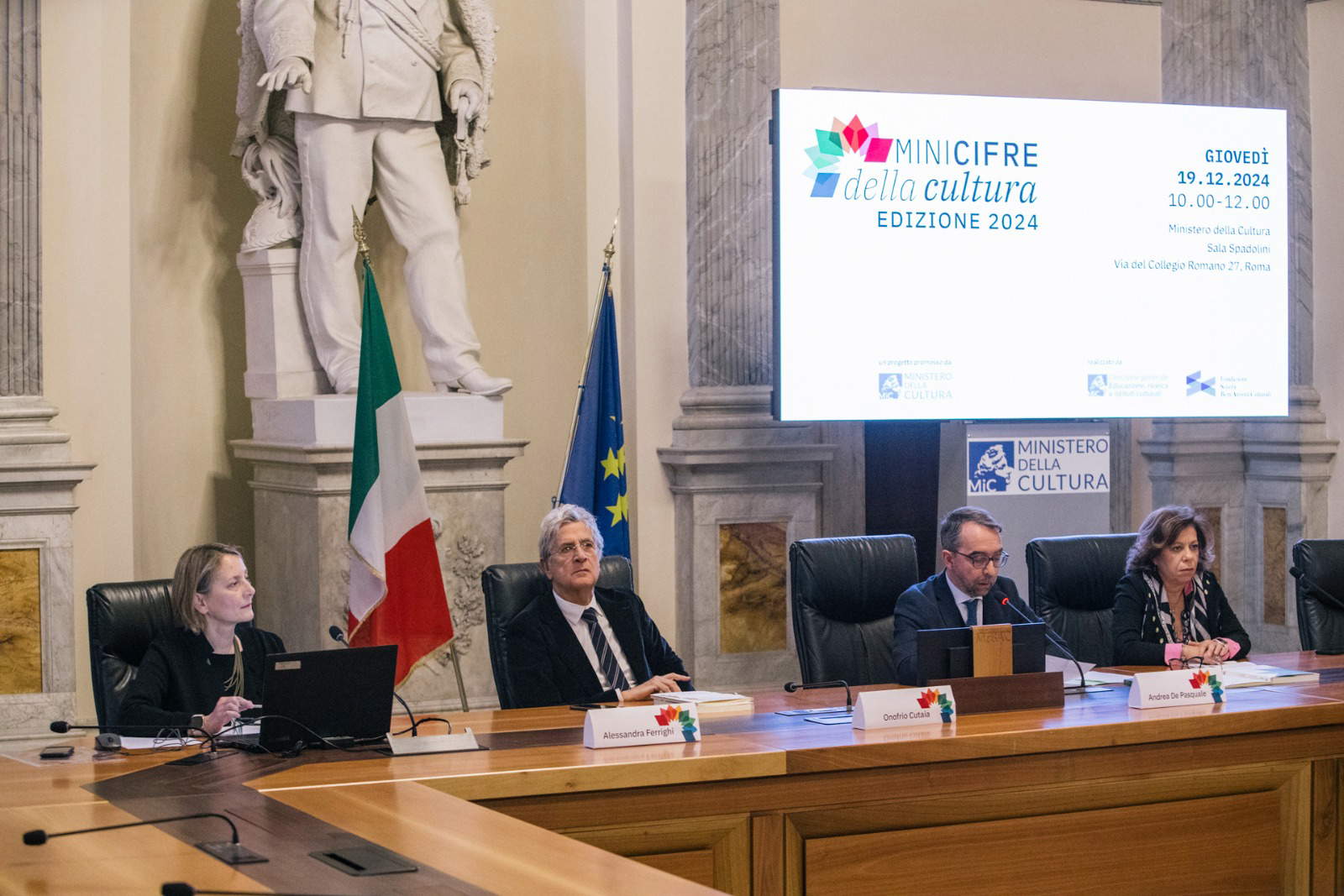In Rome this morning, the 2024 edition of the Minicuries of Culture was presented at the Ministry of Culture. The collection, edited by the General Directorate for Education, Research and Cultural Institutes of the MiC and the Fondazione Scuola dei beni e delle attività culturali, offers a look at the main Italian cultural indicators, with updated data on participation, supply and work in the sector.
One of the most significant indicators presented in the volume is that of cultural participation outside the home: in 2023, 35.2 percent of the population aged 6 and older took part in cultural activities, registering an increase of 12 percentage points over 2022, the last pandemic year. This value marks a return to pre-pandemic levels (in 2019 it was 35.1 percent), breaking a four-year decline. The fact remains that as many as 65 out of 100 Italians have never visited an exhibition or museum during the year, but at least the trend is growing. At the same time, library attendance is also growing: 12.4 percent of Italians went to a library at least once during the year, up from 10.2 percent in 2022, although it remains far from the 15.3 percent recorded in 2019.
As for cultural sites, there are 4,416 heritage places surveyed, one for every two Italian municipalities, including 2,870 public and 1,546 private ones. Of these 4,416 places, 62 percent have accessibility infrastructure, 44 percent have between 1 and 5 staff, 68 percent have social media accounts, and 23 percent have a ticketing service. Tuscany is the region with the largest number of museums, monuments and archaeological areas. There were 107.9 million visitors to Italian heritage sites (we are talking about 2022 in this case, however). The three most visited exhibitions in 2023 were Van Gogh. Masterpieces from the Kröller-Müller Museum in Rome, Palazzo Bonaparte (580,741 visitors), the Architecture Biennale (285,000 visitors), and Giuseppe Penone. Universal Gestures at the Galleria Borghese (202,765): dedicated-ticket exhibitions are mentioned.
The entertainment sector, hard hit in past years, shows signs of strong recovery. ISTAT data show a significant increase in attendance at film shows, rising from 9 percent in 2021 to 41 percent in 2023. Theater attendance (from 3 percent to 20 percent) and pop and jazz concerts (from 3.7 percent to 21.7 percent) are also growing. The SIAE confirms this trend: the number of concerts organized in 2023 exceeded that of 2019 by 60%, while theater performances increased by 11%.

The data also concern thepublishing sector. There are 86,174 books published in Italy in 2023 (45 percent also available in e-book format) by 1,476 active publishers, with an average print run of 2,337 copies per book: of these volumes, 77.5 percent are works for adults, 12.5 percent for children, and 10 percent are scholastic works. Self-publishing accounts for 14% of the total number of books published. As for readers, there are 40 out of 100 Italians who have read at least one book during the year; thus, there are 60 percent of Italians who do not read.
Even fewer are newspaper readers: in this case it drops to 22.5 percent of the population aged 14 and over, which corresponds to a total of 11.6 million newspaper readers (both print and digital). There are 119 newspapers, 74 news agencies and 77 newspaper publishing companies registered in Italy. An average of 2,063,708 newspapers are printed daily (down 19 percent from 2021, when circulation was 2,537,443). Periodicals also plummet: weeklies drop from 5,364,723 in 2020 to 4,573,777 in 2022 (-15%) and monthlies from 3,651,741 in 2020 to 2,549,627 in 2022 (-30%). The state, in 2022, guaranteed 94 million euros in public contributions to publishing and the press, up from 2021 (90 million) and 2020 (88).

In terms of employment, the cultural sector counted 825,100 workers, or 3.5 percent of total employment in Italy, according to Eurostat data. Italy thus ranks 20th in the EU, below the average of 3.8 percent. Most workers are men (55 percent) between the ages of 30 and 59, while young people under 30 account for only 13 percent of the total, despite a 21 percent increase from 2021.
Wages are on the rise: the average gross hourly wage rises to 19.75 euros per hour (it was 19.04 in 2019 and 18.98 in 2020), with significant gender differences though, as males earn an average of 21.19 euros, women 18.32. Those who fare the worst are workers in libraries, museums, and archives (14 euros per hour), followed by workers employed in creative, artistic, and entertainment activities (15.14) and information services workers (16.45). Those earning the most in the six census areas, however, are workers in film, video, television program and music recording production (25.07), followed by publishing workers (24.65) and workers in programming and broadcasting activities (23.21).
The workforce of the Ministry of Culture increases by 35 percent: from 8,639 employees in 2021 to 11,693 in 2023. Of these, 986 are between 20 and 35 years old, 3,756 are between 36 and 50 years old, 6,608 are between 51 and 65 years old, and 343 are over 65 years old. Most of the headcount (71 percent) is assigned to the assistant area.

According to Eurostat data, Italian spending on culture for 2022 amounts to 8.9 billion euros, which corresponds to 0.8 percent of total public spending. Italy spends less than the major European countries: Spain spent 9.012 billion euros on culture in 2022, France 22.5 and Germany 26.3. Just below Italy is the Netherlands, with public spending on culture of 6.08 billion euros. For all these countries, the share of public spending is between 1.4 percent (Spain and Germany) and 1.5 percent (France and the Netherlands), for an EU average of 1.3 percent. In essence, Italy spends proportionately just over half of what other countries spend on culture.
In 2022, about two-thirds of public spending on culture was generated by the central government (67 percent); in particular, resources allocated to broadcasting and publishing services were ascribed almost exclusively to central government. It is possible, however, to discern a gradual increase in local government spending on culture between 2020 and 2022. 3.6 billion is allocated in 2023 by the Ministry of Culture, up 26 percent from 2019. The Art Bonus in 2023 disbursed resources of 121.6 million (up 26 percent from 2019), while 247 million euros are disbursed by banking foundations to the cultural sector in 2022, up 12 percent from 2020.
The 2024 edition of Minicifres is part of a larger research project, which continues the publishing series launched by the ministry between 2009 and 2014. In addition to print and digital formats, the new edition introduces an online platform, minicifre.cultura.gov.it, which is constantly updated and now also available in English. Users can browse regional data, query charts and maps, and filter information by year and geographic area.
Also new this year is the compendium "Culture Minicifers. Featured, " a concise version that concentrates the main trends in Italy’s cultural system in just a few pages, designed for an audience seeking a quick but authoritative reference tool.
 |
| Italy continues to spend nearly half the EU average on culture. Here is Italian culture in figures |
Warning: the translation into English of the original Italian article was created using automatic tools. We undertake to review all articles, but we do not guarantee the total absence of inaccuracies in the translation due to the program. You can find the original by clicking on the ITA button. If you find any mistake,please contact us.